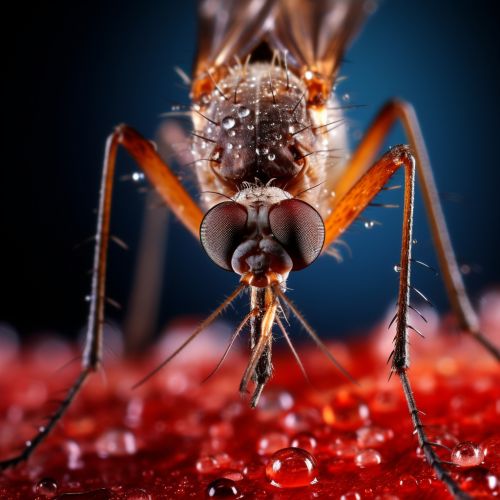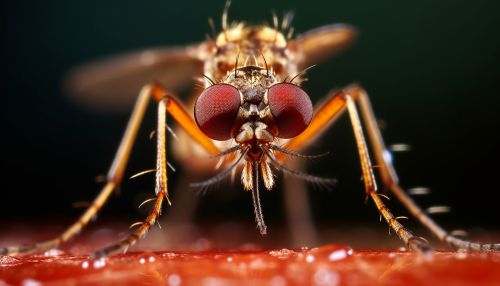Malaria
Introduction
Malaria is a life-threatening disease caused by parasites that are transmitted to people through the bites of infected female Anopheles mosquitoes. It is preventable and curable.


Causes
Malaria is caused by the Plasmodium parasite. The parasite can be spread to humans through the bites of infected mosquitoes. There are many different types of Plasmodium parasite, but only five types cause malaria in humans. These are:
- Plasmodium falciparum
- Plasmodium vivax
- Plasmodium ovale
- Plasmodium malariae
- Plasmodium knowlesi
Symptoms
The symptoms of malaria typically include fever, fatigue, vomiting, and headaches. In severe cases, it can cause yellow skin, seizures, coma, or death. Symptoms usually begin ten to fifteen days after being bitten by an infected mosquito. If not properly treated, people may have recurrences of the disease months later.
Diagnosis
Malaria is typically diagnosed by the microscopic examination of blood using blood films, or with antigen-based rapid diagnostic tests. Modern techniques that use the polymerase chain reaction to detect the parasite's DNA have also been developed, but these are not widely used in malaria-endemic areas due to their complexity.
Prevention
Methods used to prevent malaria include medications, mosquito elimination, and the prevention of bites. There is no vaccine for malaria. The presence of malaria in an area requires a combination of high human population density, high mosquito population density, and high rates of transmission from humans to mosquitoes and from mosquitoes to humans.
Treatment
The treatment of malaria depends on many factors including disease severity, the species of malaria parasite causing the infection, and the part of the world in which the infection was acquired. The latter two characteristics help determine the probability that the organism is resistant to certain antimalarial drugs. Additional factors such as age, weight, and pregnancy status may limit the available options for malaria treatment.
Epidemiology
Malaria is commonly associated with poverty and has a major negative effect on economic development. In Africa, it is estimated to result in losses of US$12 billion a year due to increased healthcare costs, lost ability to work, and negative effects on tourism.
Research
There is a large amount of variation in the genetic structure of the Plasmodium falciparum and Plasmodium vivax parasites, and understanding this variation can lead to insights into the evolutionary pressures on the parasites. Research is also looking at the possibility of creating a vaccine for malaria.
